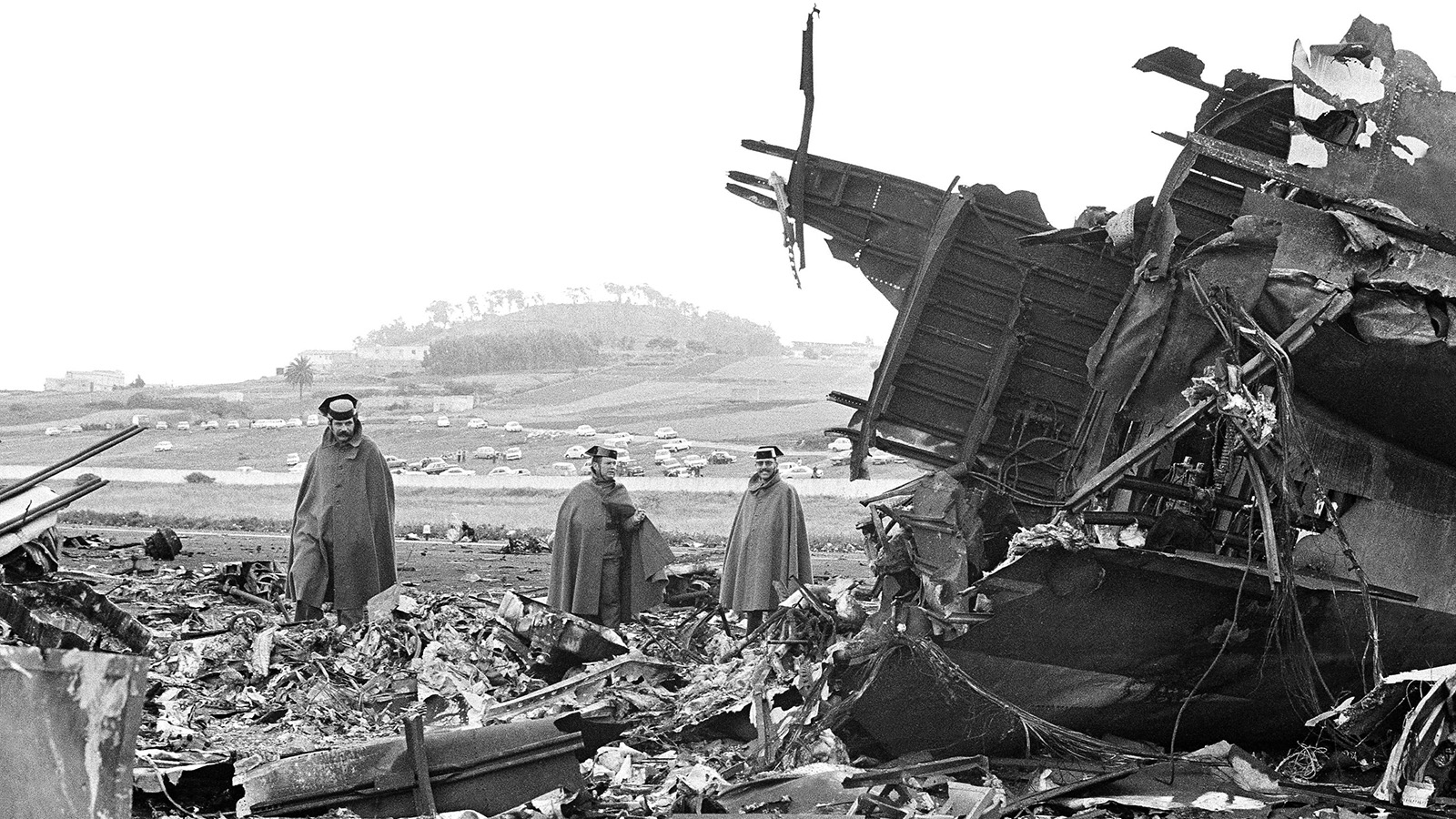Ending runway incursions
By Keith Button|May 2023
The spate of near collisions at U.S. airports this year has energized discussions in the industry over technical and human factors solutions. An alert system rolled out so far to only 20 airports in the U.S. could point the way. Keith Button tells the story.
Two planes carrying a combined 308 people were on the same runway in Queens, New York, as one of them started to take off. In Austin, Texas, a cargo plane came within 30 meters of landing on an airliner taking off from the same runway. In Boston, a business jet taking off nearly collided with a passenger jet landing on an intersecting runway. In Burbank, California, a regional jet aborted its landing to avoid another passenger plane taking off from the same runway. At Reagan National in Virginia, a regional jet crossed a runway in front of an airliner that had started to take off.
None of these incidents between January and March caused deaths or injuries, but history makes clear that any runway incursion — in FAA’s terms, an “incorrect presence” on a runway — must be taken seriously. The deadliest aviation accident in history occurred in 1977 in the Canary Islands when a Boeing 747 taking off collided with another 747 taxiing on the same runway, killing 583 passengers and crew members. In response to the recent incursions, FAA called an emergency “safety summit” of aviation safety experts in March to discuss the issue. Later, the agency issued an “aviation safety call to action” urging “vigilance and attention” to runway incursion risks. FAA also called on the aerospace industry to identify technologies that could improve runway surveillance and be deployed to all airports that have air traffic controllers.
Part of the answer may lie with runway safety technology developed about a decade ago. These heavily networked Runway Status Lights are now installed at 20 of the busiest airports in the U.S. Three of the five airports where the recent incidents occurred do not have them. In Boston, the lights were installed, but FAA said it appears the pilots ignored the lights and commands from air traffic controllers. In Queens, where the lights were also installed, the National Transportation Safety Board did not reference the lights but said the pilots ignored air traffic controllers.
The lights are embedded in the pavement of runway intersections and takeoff points and are governed by algorithms and networks of surveillance radars. Next, developers want to enhance the technology to anticipate a pilot’s intent, for example. The goal would be to give FAA confidence to extend the technology to the other 500 major U.S. airports.
When researchers at MIT Lincoln Laboratory outside Boston began developing the technology in the early 2000s, the idea was to track airplanes on the ground and automatically trigger the lights to turn red without any involvement from air traffic controllers, says James Kuchar, who led the Runway Status Lights project and now oversees Lincoln Lab’s transportation technology programs. The lights would not supersede commands from air traffic controllers, who have the authority to clear planes for crossing, entering or departing a runway.
Initially, the algorithms tracked aircraft with three sources of information: primary surface radars that bounced signals off the skin of aircraft, receivers around the airport that geolocated aircraft based on arrival times of their transponder signals, and the rotating surveillance radar that tracked planes coming in to land. Today, the algorithms also track planes via their Automatic Dependent Surveillance-Broadcast transponders that broadcast GPS position and other information. ADS-B has been installed on large passenger aircraft, as mandated by FAA, but not yet adopted by all smaller aircraft.
For the next generation of runway safety systems, ADS-B will contribute much greater situational awareness capabilities, says Christopher Oswald, who heads safety and regulatory affairs for Airports Council International-North America in Washington, D.C.
“Ideally, you get 100% of anyone operating at airports equipped with that technology. We’re on the cusp of better and more distributive surveillance capability,” he says.
Why have Runway Status Lights only been adopted at 20 airports? A big reason is the cost of installation, which can run into the tens of millions of dollars, plus the cost of maintenance, Oswald says. As ADS-B becomes widely adopted, surveillance methods won’t have to rely as much on radar and antennas for transponder signals, which he estimates will lower costs considerably for next-generation technology.
For the smallest U.S. airports with air traffic control towers — Class D airports, of which there are about 370 — ADS-B is not required for aircraft. And about half of the Class D airports have no radar coverage. Researchers for another Lincoln Lab project have proposed a runway safety solution for these airports that would surveil and locate plane positions based on the signals transmitted by the transponders now carried by all planes. However, this Small Airport Surveillance Sensor, or SASS, program is currently in limbo.
Research and demonstration of the surveillance piece of the technology ended in 2020, and FAA hasn’t authorized funding for the next stages, in which software would be developed to govern the logic for alerts issued in the form of red runway lights or audio broadcasts to air traffic controllers and all planes in the vicinity. Controllers at these Class D airports are limited only to issuing binary clearances for taking off or landing — yes or no — and don’t provide instructions for taxiing.
Cost is an issue here too: The researchers estimate that installing the technology, including antennas needed to geolocate the planes and runway lights to warn of potential runway incursions, would cost $1.5 million to $2 million per airport, which would be borne by FAA, says Steve Campbell, who was SASS project leader and has since retired from Lincoln Lab. As a rule of thumb, FAA needs evidence that the costs of installing a new technology will reap a 6-to-1 ratio of benefits on its investment, Campbell says.
Another key factor to consider in the advancement of runway safety technology will be human factors. In their development of Runway Status Lights, the researchers had to consider human factors: that even if the lights produced no false alarms and flawlessly detected every potential runway incursion, a pilot might ignore or miss them. Kuchar says he can’t speak to the 2023 near misses, but in general, human factor issues often lead to such incidents.
“One aspect is just the workload involved in an airplane cockpit while you’re taxiing in a very complicated airport,” he says. “There’s a lot going on. If it’s nighttime, there’s this sea of taxiway lights out there of different colors.”
For pilots on the tarmac, red lights always mean stop. Blue lights mark the edges of the taxiways, with green lights down the center; both the green and blue lights are always on. Runways are demarcated with white lights on the sides and down the center, plus continuous flashing yellow lights that show a runway is in use, and white painting on the runways to show that they are not taxiways. The runway numbers are indicated by lit red signs with white numbers; taxiways by black and yellow signs.
Lincoln Lab studied the history of runway incursions and concluded that 75% of all past incidents would have been prevented by Runway Status Lights, assuming they were error free and pilots heeded them or did not miss them. But these lights are designed only for signaling airplanes on the ground, not those in flight, so they wouldn’t have stopped incidents when a landing airplane was at fault.
The researchers considered an additional light system to warn pilots coming in for a landing that their runway was occupied, but ultimately decided against it. One problem with such a system would be that the mental focus required of pilots during a landing would likely make it difficult to capture their attention with lights, Kuchar says. The solution considered and rejected at the time was to make use of lights that are already in place along runways. Flashing the lights that normally warn landing pilots if they are coming in too high or too low. These lights are off to the side of the runway, typically in sets of four: Four white lights means too high, four red lights means too low, and two red lights plus two white means the landing glide path is just right.
“Partly, I think the sense was that that was just not a strong enough signal for pilots to really get,” Kuchar says. “One of the issues was that it just wasn’t really going to be a reliable enough warning, because there’s all this other information out there that the pilots are looking at,” so “they might not even see the lights flashing.
“There are cases of airplane accidents where there are warning sirens going off, and the pilots just never apparently hear them because they’re so focused on something,” continues Kuchar, who designed airborne collision avoidance systems when he started at MIT in 1995 and at Lincoln Lab in 2003.
Another option they considered for warning the pilots of landing planes about runway incursions was to build off the verbal warning systems already carried by planes to avoid midair collisions and flying into the ground.
But the current version of the airborne collision avoidance system isn’t precise enough to tell the difference between another plane in flight on a collision course and a plane that is simply taxiing or stopped off the side of a runway, Kuchar says. The system turns itself off below a certain altitude so as not to set off false alarms between a plane in flight and a plane on the ground.
Another human factors problem is confirmation bias. Kuchar encountered this in his work as a graduate student at MIT, when he helped design potential improvements to the ground proximity warning system, which at the time signaled that a plane was in danger with a red light and a verbal warning to the pilot to pull up. But planes were crashing into mountains even with the ground proximity warning system because pilots were ignoring it as a false alarm; they were certain in their minds that they hadn’t made a wrong turn or flown into the clouds that would cause them to crash. So Kuchar worked on warning systems that would show the pilots a computer map of the mountain or terrain they were about to crash into, which would convince the pilots to heed the warning.
“You can see there’s a mountain out there. Now, I know why it’s telling me to pull up; I can actually see this thing,” he says. “That makes a huge difference in pilots understanding where they are and then agreeing to do something when they need to do something.”
Situational awareness of pilots and air traffic controllers and communication issues between the two are two big factors that contribute to runway incursions, says Hassan Shahidi, president and CEO of the Flight Safety Foundation in Alexandria, Virginia. Both are addressed by following standard operating procedures.
“There’s a reason why we have all the standard operating procedures over the years and years and years: because they work, and they prevent these situations,” Shahidi says.
In the case of the Queens incursion this year, the taxiing pilot proceeded to cross the runway in spite of verbal instructions from air traffic controllers, Shahidi says, which may have been due to the task saturation of operating a plane through a busy airport.
Ultimately, a redundant layer of safety — the air traffic controller intervening and canceling the departure of the plane on its takeoff roll — prevented a collision. “That worked, but that was the last layer in this,” Shahidi says.
Kuchar predicts that artificial intelligence and machine learning, tools that weren’t available to the Lincoln Lab researchers in the early 2000s, will be instrumental in developing the logic that governs new runway safety technology.
Algorithms for the Runway Status Lights and collision avoidance systems were complicated sets of rules or instructions based on if-then constructions: “If this is happening and that’s true and this isn’t true, then turn the light on,” Kuchar says. “That requires a bunch of experts to sit down and figure all this out and then run it through a bunch of simulations and see what works and what doesn’t. It’s a very iterative design process.”
Today, with machine learning, researchers can design safety systems by collecting huge volumes of data about how aircraft operate in the real world and let an algorithm learn from that, and then produce the optimal decision algorithm, Kuchar says. Another improvement from a decade ago is technology that better connects airplanes and air traffic control systems and allows airplanes to become more intelligent about where other planes are and what they’re doing.
“A big problem with Runways Status Lights or runway incursions is intent. What is the intent of this other airplane? Are they going to cross or not? How much do I trust them to stay there?” Kuchar says. “The more visibility you have into the intentions of other airplanes or other vehicles, the better job you will be able to do deciding whether or not you need to tell the pilot to do something or tell the air traffic controller do something.”
“One aspect is just the workload involved in an airplane cockpit while you’re taxiing in a very complicated airport. There’s a lot going on. If it’s nighttime, there’s this sea of taxiway lights out there of different colors.”
James Kuchar, MIT Lincoln Laboratory










